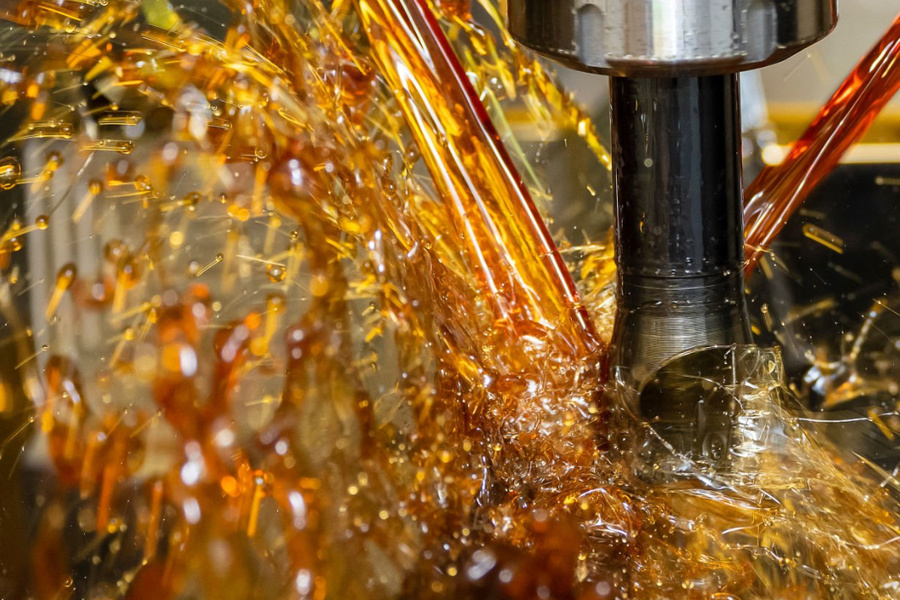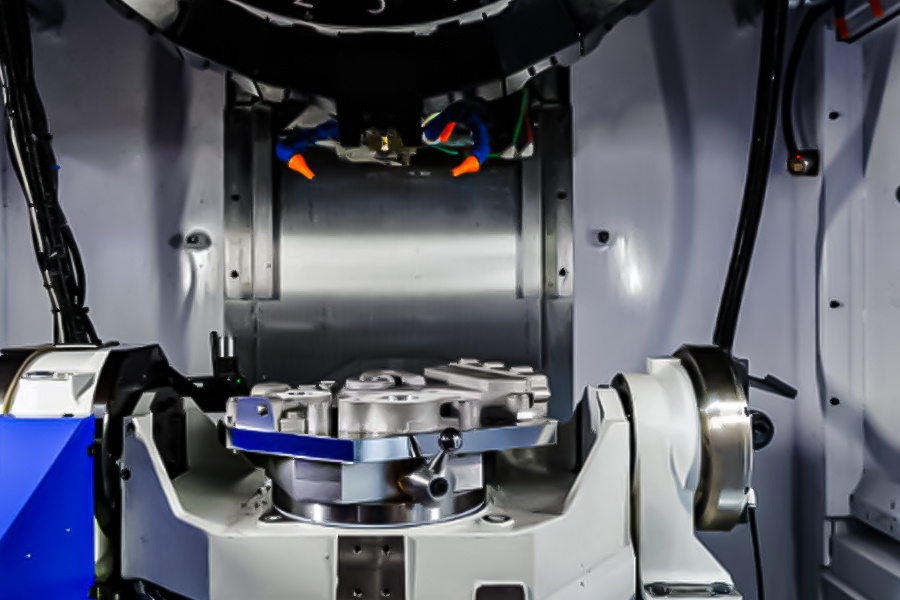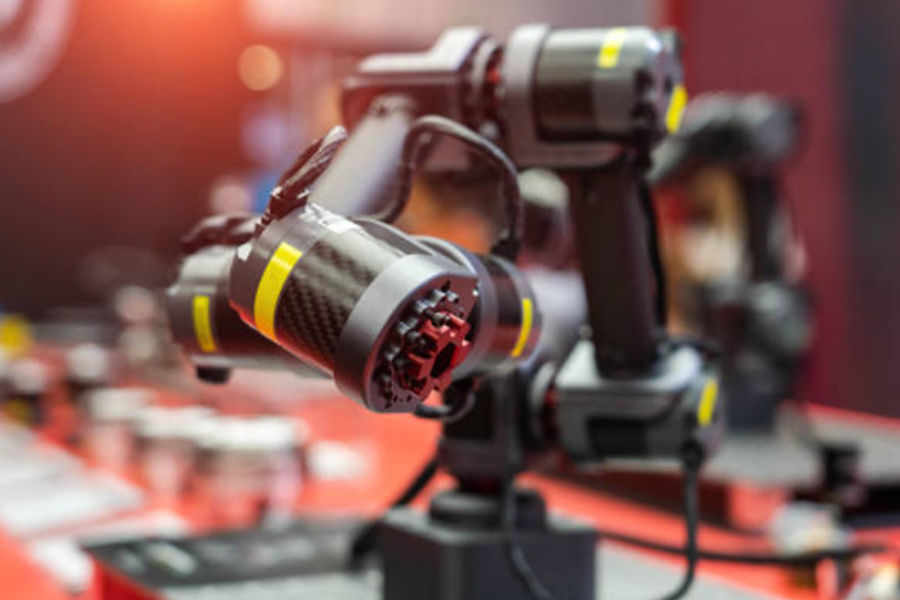Medical precision machining technology breakthrough: How micron-level precision reshapes artificial joint and surgical robot manufacturing
Release time:
2025-06-14
The manufacturing process of precision accessories in modern medical equipment, especially the use of core processing technologies such as CNC turning and laser micro-welding to achieve precise manufacturing in complex medical scenarios. These technologies not only require precise dimensional control, but also must meet biocompatibility and long-term stability.
The progress of modern medical technology is inseparable from the breakthrough of precision machining technology, especially in the field of high-end medical equipment manufacturing such as artificial joints and surgical robots. Medical precision accessories not only need to meet micron-level precision requirements, but also must meet strict biocompatibility standards to ensure patient safety and treatment effects. This article will systematically analyze how core machining technologies such as CNC turning and laser micro-welding can achieve precision manufacturing in complex medical scenarios, such as shaping the curved structure of artificial joints through multi-axis linkage technology, or using ultra-short pulse lasers to complete non-destructive welding of micro surgical instruments. At the same time, the article will also discuss the characteristics of medical-grade titanium alloys and PEEK materials and their processing difficulties, such as how to avoid thermal deformation problems in titanium alloy processing through constant temperature cutting processes. The optimization and application of these technologies provide important support for improving the reliability and clinical effectiveness of medical devices.
Analysis of medical precision machining technology
Modern medical equipment has extremely high performance requirements for precision accessories, which not only need to achieve micron-level dimensional accuracy, but also must meet biocompatibility and long-term stability. Taking artificial joints and surgical robot core components as examples, their processing usually adopts CNC turning and laser micro-welding technology. The former realizes complex curved surface forming through high-speed tools, while the latter can complete the seamless connection of ultra-thin metal sheets and avoid thermal deformation caused by traditional welding. To adapt to different medical scenarios, titanium alloy and PEEK (polyetheretherketone) have become mainstream materials - titanium alloy is often used in orthopedic implants due to its high strength and corrosion resistance; while PEEK material is mostly used in spinal repair devices because of its elastic modulus close to that of human bones. Under the ISO 13485 quality system specification, the processing link needs to simultaneously carry out surface polishing, cleanliness testing and biofilm treatment to ensure that the finished product can accurately match the human body structure in clinical applications and reduce the risk of rejection.

Micron-level precision control solution
The realization of micron-level precision control of medical precision accessories requires multi-dimensional technology collaboration. First, the processing equipment needs to be equipped with high-resolution sensors and closed-loop feedback systems to monitor the vibration and temperature changes during the cutting process in real time, and control the error dynamic correction range within ±3 microns. In the specific operation, for complex curved surface parts such as artificial joints, a five-axis linkage CNC machine tool is used with a diamond tool for layered milling, and the cutting depth of each layer does not exceed 0.02 mm. At the same time, vacuum adsorption and flexible positioning technology are introduced in the part clamping process to avoid the slight deformation caused by traditional mechanical fixtures. In the detection process, the combined application of a three-dimensional laser scanner and a white light interferometer can measure the full size of micro-threaded structures with a diameter of less than 0.5 mm to ensure that the key dimensions meet the requirements of the ISO 20485 standard. These precision control processes lay the physical foundation for subsequent biocompatibility treatment, enabling medical devices to achieve stable mechanical properties after being implanted in the human body.
Medical titanium alloy processing practice
Medical titanium alloy has become the core material for implantable devices such as artificial joints and bone screws due to its light weight, high strength and excellent biocompatibility. During the processing process, CNC turning technology ensures the dimensional accuracy of complex curved surface structures through 0.005 mm level tool path control; at the same time, the five-axis linkage machining center can complete the efficient forming of multi-angle holes and threads, reducing the error risk caused by secondary clamping. To improve the surface quality, a combination of sandblasting and electrolytic polishing is required after processing to eliminate microscopic burrs and form a uniform oxide layer, thereby reducing the rejection reaction of human tissue. It is particularly important to note that all processes must be carried out in a clean environment certified by the ISO 13485 standard to prevent metal debris or contaminants from remaining. By monitoring the cutting force and temperature changes in real time, engineers can dynamically adjust parameters to balance processing efficiency and material performance stability.

Application of surgical robot accessories
In the manufacturing of surgical robots, precision machining technology directly determines the operating accuracy and reliability of the instrument. For example, the pitch error of the transmission gear of the robotic arm needs to be controlled within 5 microns to ensure the stability of the surgical action; and the micro jaws of the end effector need to be seamlessly connected through laser micro-welding technology to avoid the risk of bacterial residue. In order to meet the requirements of biocompatibility, titanium alloys and medical-grade PEEK materials are widely used in parts that contact human tissues. After the surface is polished at the nano level, it can reduce tissue damage and extend the service life of the instrument. In the assembly process, the joint bearings processed by multi-axis CNC machine tools can achieve a positioning accuracy of ±0.01 mm, ensuring that the robotic arm can rotate flexibly in a narrow cavity. These technological breakthroughs enable surgical robots to accurately complete difficult operations such as vascular anastomosis and tumor resection, significantly improving the success rate of minimally invasive surgery.
With the continuous advancement of medical technology, the processing capabilities of medical precision accessories have gradually broken through the limitations of traditional manufacturing. Micron-level precision control technology makes the surface roughness of artificial joints reach a few tens of the diameter of a hair, and the laser micro-welding process increases the connection strength of micro-components inside surgical robots by more than 40%. Under the strict specifications of the ISO 13485 quality system, the processing process of medical titanium alloys and PEEK materials must not only meet the dimensional accuracy requirements, but also pass 12 key indicators such as biocompatibility testing and fatigue life verification. These technological breakthroughs not only reduce the risk of postoperative infection, but also extend the service life of orthopedic implants to more than 15 years. In the future, with the in-depth integration of intelligent sensing technology and precision processing equipment, the customized production efficiency and clinical adaptability of medical equipment will achieve a greater leap.
Related Products
CNC machining multi-axis linkage accurately processes tooth profile and journal size
CNC machining technology plays a core role in the machining of precision gears and shaft parts, achieving high-precision micron-level precision, significantly improving the wear resistance and fatigue resistance of parts, and ensuring the stable operation and high quality of the transmission system. In modern industrial manufacturing, its application in automobile manufacturing, precision instruments, industrial equipment and other fields has significantly improved the overall quality.
2025-06-28
Automotive precision parts processing: Use high-precision gears to drive the future of new energy
The development of new energy vehicles has put forward higher requirements for the precision of parts. The breakthrough of micron-level manufacturing technology has laid the foundation for the stable operation of the power system. High-precision gears are innovatively applied in the energy conversion system of new energy vehicles, which reduces friction loss, improves transmission efficiency and prolongs gear life.
2025-06-18
The manufacturing process of precision accessories in modern medical equipment, especially the use of core processing technologies such as CNC turning and laser micro-welding to achieve precise manufacturing in complex medical scenarios. These technologies not only require precise dimensional control, but also must meet biocompatibility and long-term stability.
2025-06-14
Five-axis machining centers have gradually become the core equipment for the manufacture of complex parts due to their multi-dimensional dynamic machining capabilities. Compared with four-axis equipment, five-axis machining centers significantly improve the machining accuracy and surface quality of special-shaped structural parts through multi-angle synchronous cutting, shortening the production cycle.
2025-06-11











